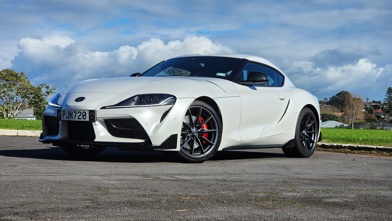First, the bad news: we did not set lap records of any kind with the Porsche 911 GT3 RS; nor do we have extreme on-road adventures to relate. This was one business day in a brand-new car that was still well within its 1500km running-in period. And to be blunt, somebody else’s near-$600k car, full stop.
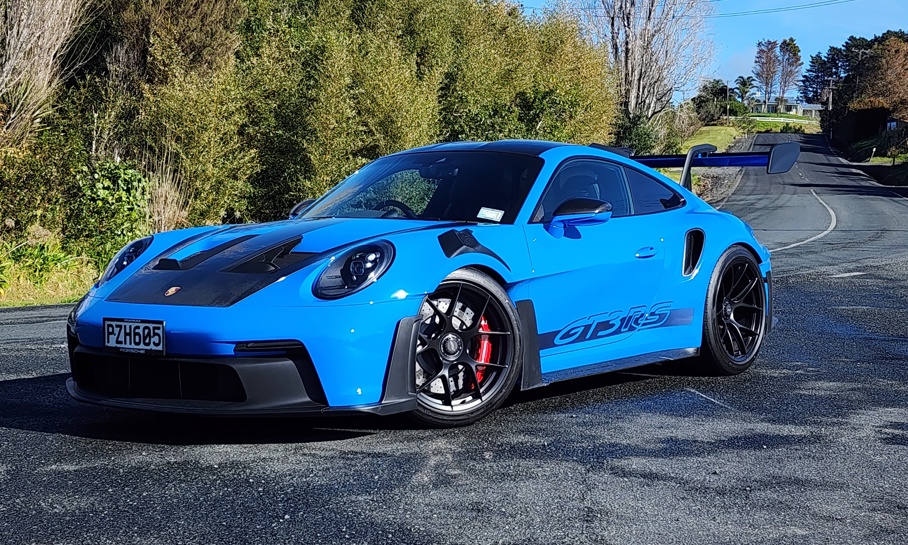
Now, the good news: although it’s designed for maximum performance on track, you do not need to go max-attack to enjoy and appreciate the RS experience: it’s an event even at legal speeds, thanks to the sheer driveability of any Porsche… and those cartoonish looks.
You might not be doing the 285km/h it takes to achieve maximum downforce, but you can appreciate the aerodynamics all the same – because you have to stop and explain why this 911 is so outrageously full of holes to almost everybody you meet.
As if you didn’t already know, the GT3 RS is the ultimate in racetrack-technology-for-the-road in 911-world. Turned right up to 11 in this latest version, which picks up a lot from the authentic 911 GT3 R racecar.
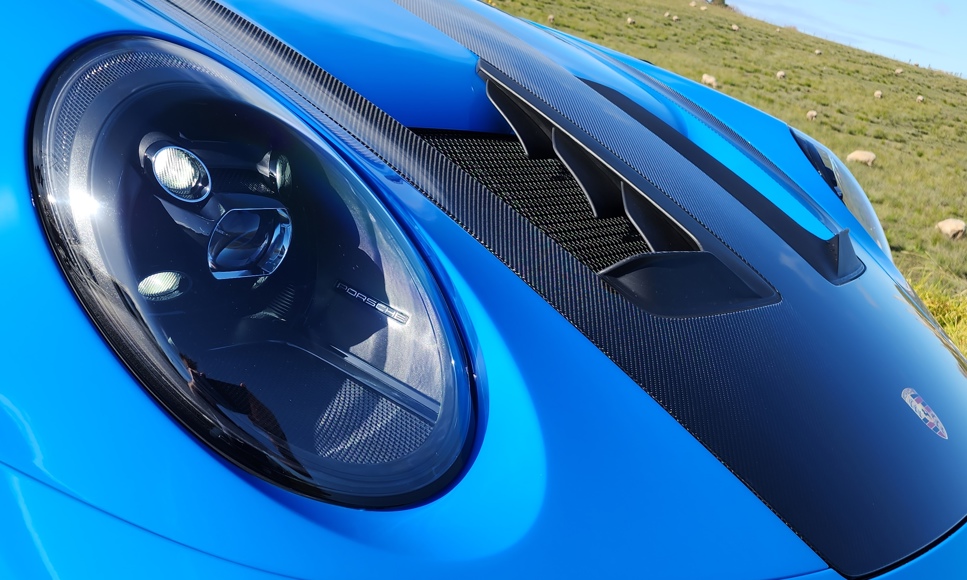
Porsche nerds get quite breathless about the fact that the three front radiators normally fitted to roadgoing 911s have been consolidated into one huge unit in the middle (yep, like the racecar). This has freed up the space to create the active aero at the front and all those holes at the sides, including Le Mans 911 GT1-style inlets behind the front wheels. Although it’s also eaten up the cargo area. And necessitated a whole new door shape.
It's first production Porsche to have a drag reduction system (DRS): the swan-neck wing has an adjustable flap that flattens out at very high speed
You might have noticed that rear wing, which is set higher than the roof - a production 911 first - so it’s in clean air. It produces 409kg of downforce at 200km/h, and a staggering 860kg at an equally staggering 285km/h. That’s double the downforce value of the previous RS.
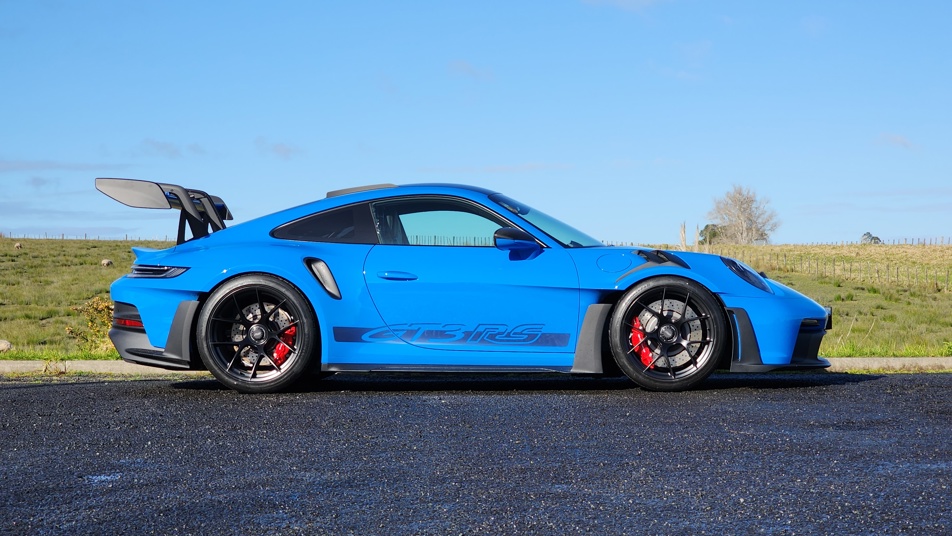
This is also the first production Porsche to have a drag reduction system (DRS). That massive swan-neck wing has a flap that flattens out at very high speed, to reduce downforce and allow maximum speed when required. It can also act as an airbrake when you hit the stoppers.
For once it’s not all about the engine. But it is still a bit about the engine
The DRS can be manually activated from the cabin when the car is Track mode; in case you need those extra km/h on the way to the supermarket.
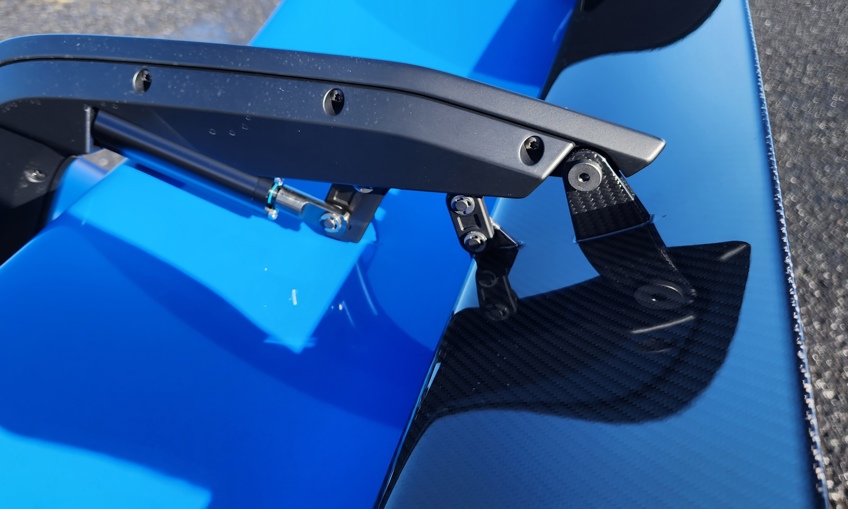
The front track is 29mm-wider and so is the suspension, so the arms have been redesigned with teardrop-shaped profiles, which help with another 40kg downforce on the front at high speed.
So it’s not all about the engine. But it is still a bit about the engine: compared with the regular GT3 (who’d want one of those now, though?), the 4.0-litre “high revving” (9000rpm) naturally aspirated six has new camshafts and modified cam profiles, taking it from 375kW to 386kW.
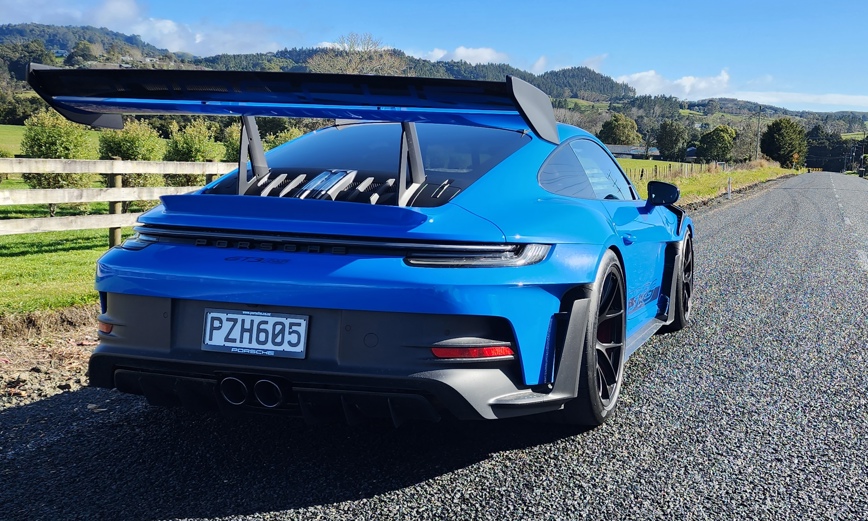
The seven-speed PDK gearbox has shorter ratios and special intakes (always with the intakes, Porsche) underneath, to keep it cool during track driving. Unlike the normal GT3 there’s no manual option, because PDK is faster.
That’s a very small power increase, but don’t be glum: there’s also carbon fibre reinforced plastic (CFRP) everywhere, including the doors, guards, roof, front lid and interior, resulting in a kerb weight of just 1450kg – about 100kg less than the standard GT3.
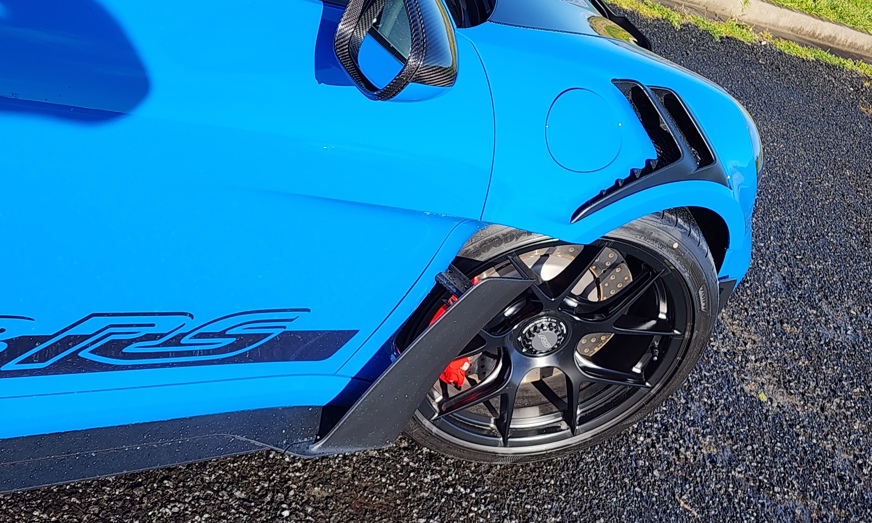
We could go on and on. Oh, we already have. If you want the really deep dive, watch the video above: it’s a 9min walkaround from Porsche GT boss Andreas Preuninger and well worth a look.
Point is, this is a car configured in a deliciously nerdy way to be the most extreme roadgoing 911 ever. It’s as close as you can get to an actual racecar, while still being able to attach number plates.
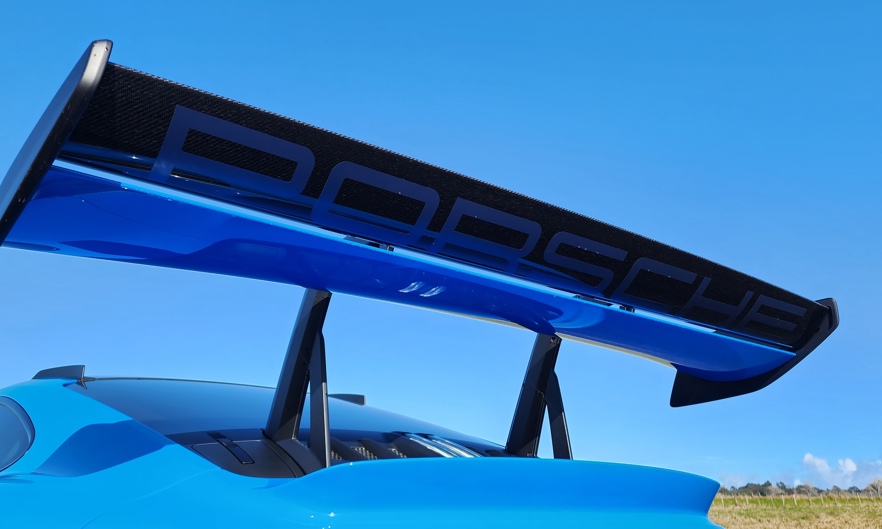
When you’ve purchased peak 911, all that remains… is to make it a bit better. Our car had a few choice options including Shark Blue paint ($7000), but also one big option in the form of the Weissach Package for $71,290, which adds a front lid/mirrors/wing in “visible carbon”, also bringing a massive “Porsche” script to the underside of that moveable wing. A must-have, naturally.
Inside you get a bolted rear roll cage in carbon, PDK paddles made of magnesium with magnetic-pull technology, lots of racecar-style Race-Tex trim and six-point harnesses for the figure-hugging bucket seats (although the regular seatbelts remain). And the headrests have a very flash “Weissach Package” logo embroidered on them.
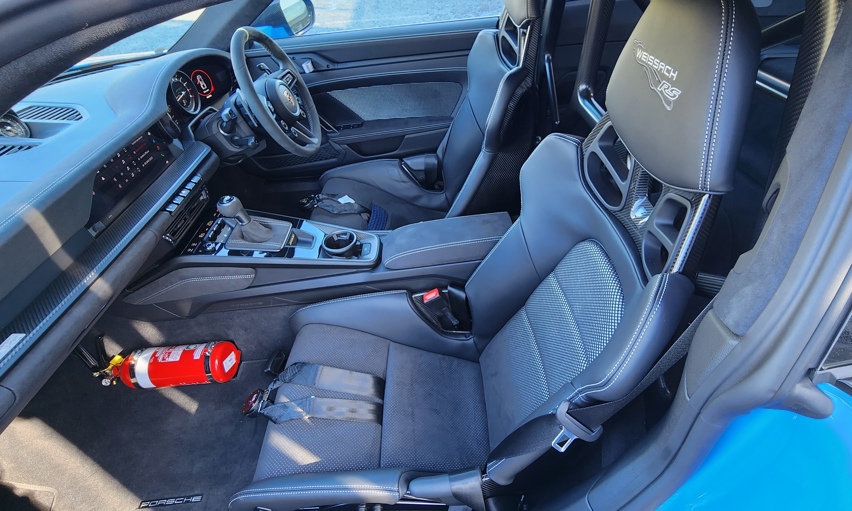
The chassis has extra stabilisers, and coupling rods made of CFRP at the rear. The wheels are forged magnesium (8kg lighter). Okay then.
It might seem like a waste to take all of that and just have a lovely drive around the hills north of the city. But you take what you can get and the RS is hugely entertaining to drive at any speed, which is the mark of a really great sports car – as opposed to a big showoff supercar, a role which the Porsche also happens fulfil extremely well. So versatile.
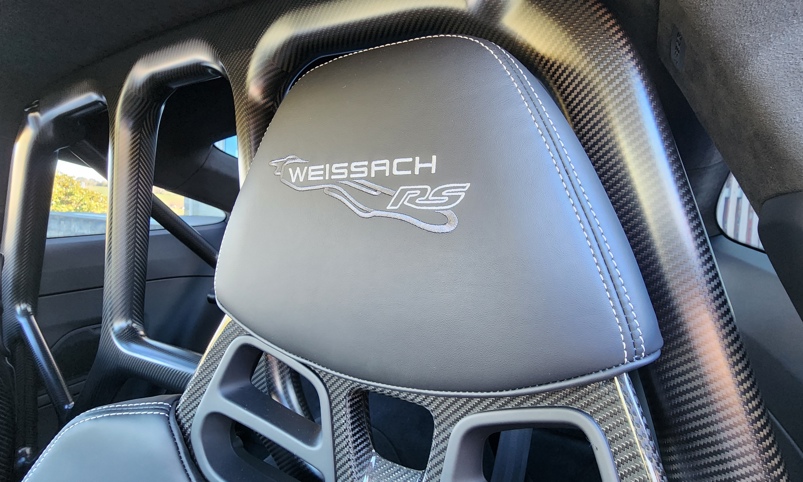
The ride is the big reminder that this is an extreme track machine. It’s very busy indeed, although still not a dealbreaker for day-to-day driving. It’s exacerbated by the low-seat seats, which drop you right down to the ground (they are power height-adjustable, to be fair) and require a bit of core strength and few groaning noises to get out of.
But it’s still just a 911 at heart, happy enough to drive along and entertain you at 30 per cent of its capabilities. The interior still has colourful digital instruments and there’s a hydraulic front lifter for the driveway.
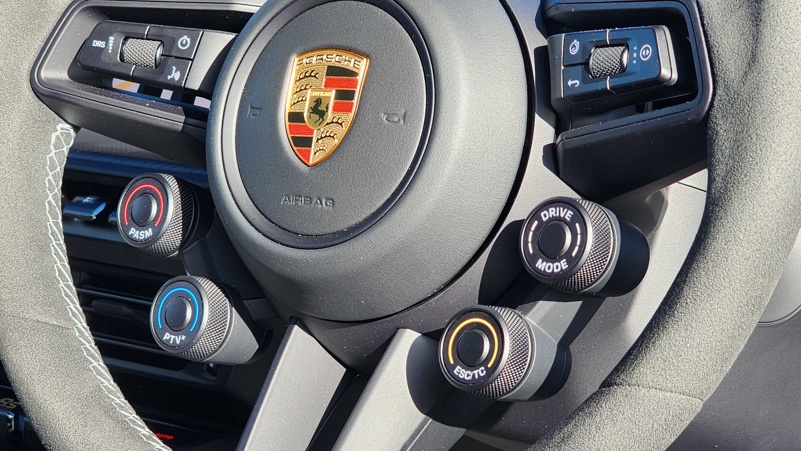
The steering is sensational and even at 100km/h there’s enough of that racecar stick-and-squat through corners to make you feel like you’re having a real RS experience.
The really serious stuff is reserved for Track mode (there’s Sport but no Sport Plus in the RS). Only then can you start to fiddle with the fantastic array of dials on the steering wheels, with individual adjustments for compression and rebound of the racing dampers front and rear, the rear differential and traction/stability.

It’s bonkers of course and hard to justify an extra $100k over the regular GT3, which is already an extreme road/track car. But that’s not the point. Porsche says this is the most extreme roadgoing GT car it has ever built and we’d say it’s also the most crowd-pleasing. Those who want it... will really want it.
PORSCHE 911 GT3 RS
ENGINE: 4.0-litre horizontally opposed petrol six cylinder
POWER: 386kW/465Nm
GEARBOX: 7-speed automated dual clutch (PDK), RWD
0-100KM/H: 3.2 seconds
CONSUMPTION: 13.4l/100km (WLTP)
PRICE: $493,500 ($579,710 with Weissach Package plus options)

